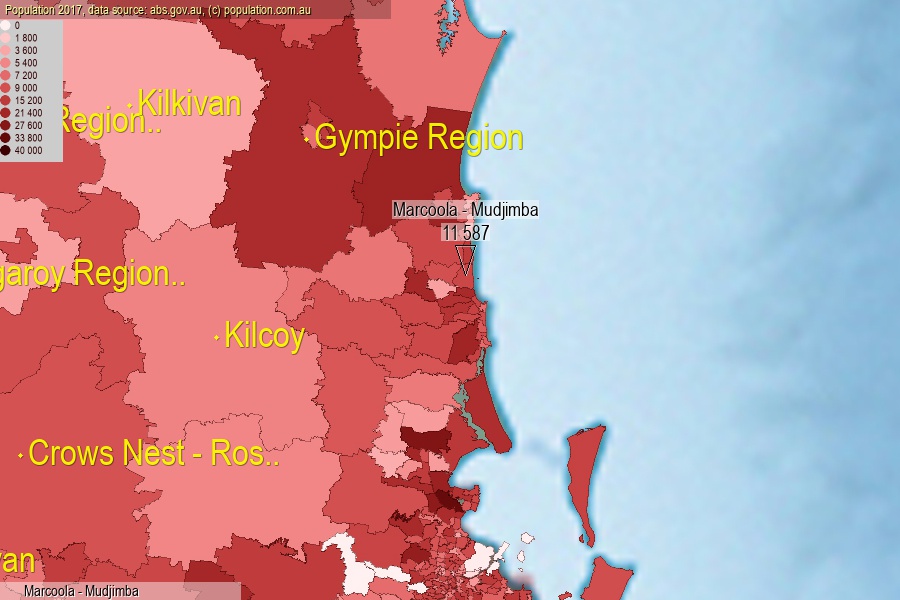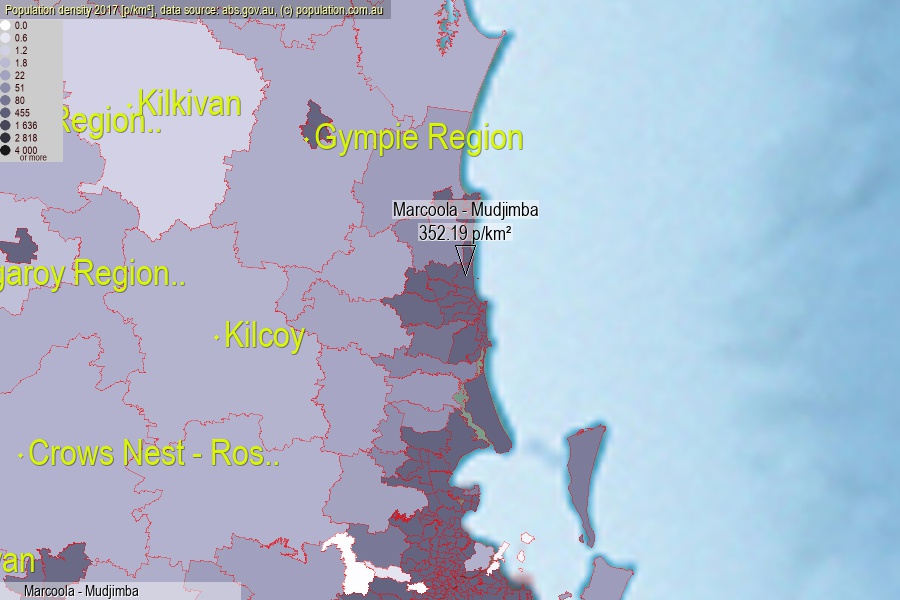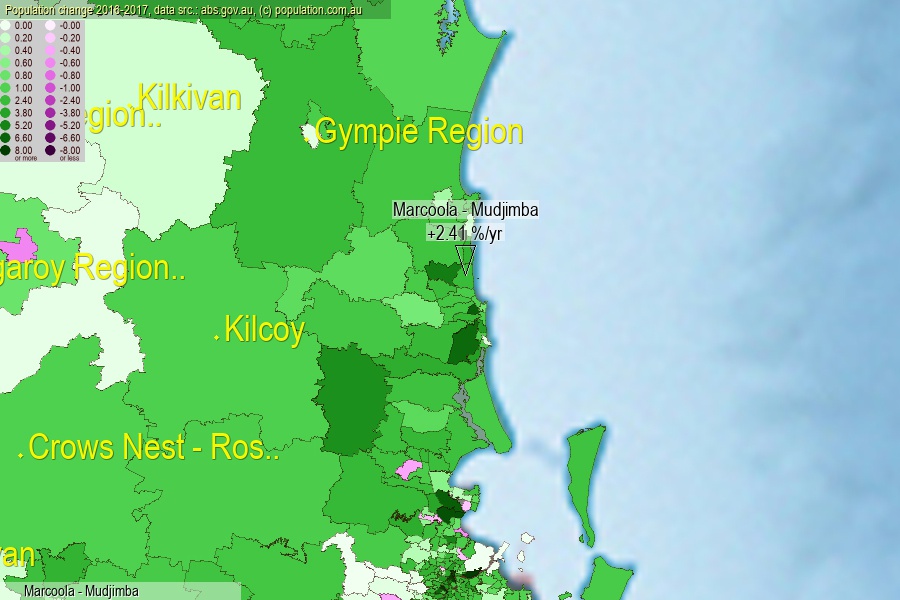 population.com.au
population.com.auLast official estimated population of Marcoola - Mudjimba (as Statistical Area Level 2) was 11 587 people (on 2017-06-30)[2]. This was 0.05% of total Australian population and 0.232% of QLD population. Area of Marcoola - Mudjimba is 32.90 km², in this year population density was 352.19 p/km² . If population growth rate would be same as in period 2016-2017 (+2.41%/yr), Marcoola - Mudjimba population in 2025 would be 14 022. [0]



Click to enlarge. Marcoola - Mudjimba is located in the center of the images.
Population [people], population density [p./km²] and population change [%/year] [2]
View borders » (new window) [4]
[1991-1992] +20.93 %/Yr.
[1992-1993] +12.22 %/Yr.
[1993-1994] +7.41 %/Yr.
[1994-1995] +7.16 %/Yr.
[1995-1996] +2.62 %/Yr.
[1996-1997] +3.30 %/Yr.
[1997-1998] +2.77 %/Yr.
[1998-1999] +3.35 %/Yr.
[1999-2000] +2.84 %/Yr.
[2000-2001] +2.68 %/Yr.
[2001-2002] +8.28 %/Yr.
[2002-2003] +8.45 %/Yr.
[2003-2004] +5.92 %/Yr.
[2004-2005] +4.88 %/Yr.
[2005-2006] +5.34 %/Yr.
[2006-2007] +4.69 %/Yr.
[2007-2008] +3.25 %/Yr.
[2008-2009] +2.30 %/Yr.
[2009-2010] +1.43 %/Yr.
[2010-2011] +0.75 %/Yr.
[2011-2012] +0.91 %/Yr.
[2012-2013] +2.17 %/Yr.
[2013-2014] +0.59 %/Yr.
[2014-2015] +0.94 %/Yr.
[2015-2016] +1.62 %/Yr.
[2016-2017] +2.41 %/Yr.
[0] Calculated with linear interpolation from officially estimated population
[1] Read more about SA2 and Australian Statistical Geography Standard (ASGS) on abs.gov.au
[2] Population data from Australian Bureau of Statistics (Population and density: 2017; change: 2016-2017)
[3] Digital Boundaries: Australian Statistical Geography Standard (ASGS) 2016.
[4] Border coordinates are simplifyed using Ramer-Douglas-Peucker algorithm.